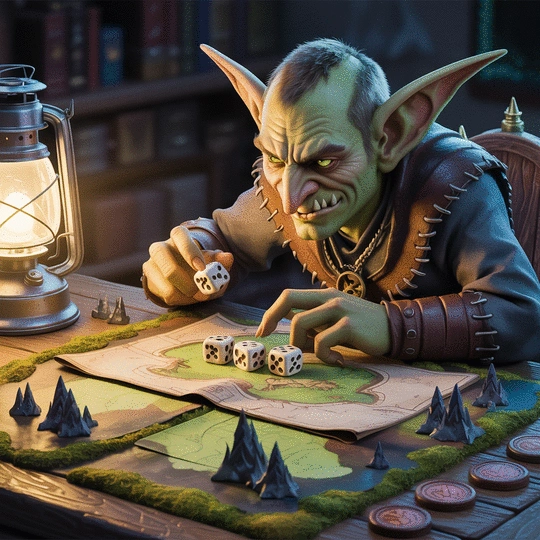Building Your Goblin Faction
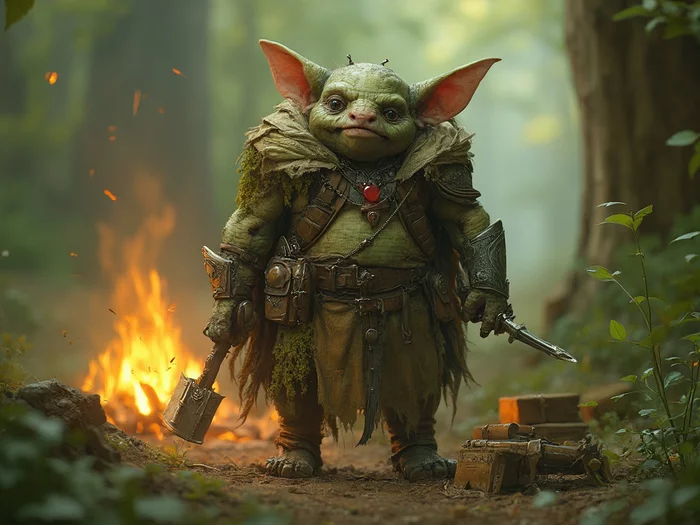
Posted on: 2025-10-09
By: Lorian Fableweaver
Have you ever imagined a world where mischievous goblins aren't just side characters but vibrant factions with rich cultures? Understanding goblin factions can transform your gaming experience, bringing depth and excitement to your campaigns. Here’s what you’ll discover!
What You Will Learn
- Goblin factions are deeply rooted communities with unique cultures and social dynamics.
- Understanding clan loyalty and resourcefulness can enhance player engagement and story depth.
- Social hierarchies in goblin tribes can create dynamic encounters and storytelling opportunities.
- Incorporating goblin language and slang adds authenticity and immersion to your campaign.
- Goblins can serve as pivotal narrative elements, driving plots through conflicts and alliances.
- Crafting motivations for goblin characters enriches the gameplay experience and establishes relatable foes or allies.
- Player choices influence goblin faction dynamics, making each campaign unique and responsive.
- Creating well-balanced goblin factions ensures they are engaging without overshadowing players.
Exploring Goblin Faction Dynamics: Key Traits and Narrative Roles
This visual summarizes the defining characteristics of goblin factions and their strategic use in campaign narratives, highlighting cultural aspects, social structures, and storytelling integrations.
Understanding the Concept of Goblin Factions in Homebrew Campaigns
Welcome, fellow adventurers! As we embark on this journey through the whimsical world of goblin factions, it's essential to understand the cultural and social frameworks that define these mischievous beings. Goblin factions are not just groups; they are vibrant communities with rich traditions and unique traits. Let’s dive into what makes these goblin clans tick!
First, let's define what we mean by goblin factions. These factions represent the various clans and tribes that inhabit the gaming realms. Each faction has its own culture, values, and social dynamics that shape their interactions with players and other factions. Understanding these elements can add depth and excitement to your homebrew campaigns!
Defining Goblin Factions: Culture and Society
To truly appreciate goblin factions, we must explore their cultural traits and societal structures. Goblins are often portrayed as chaotic and unpredictable, but they have deep-rooted values that govern their actions and relationships. Here are some key aspects:
- Clan Loyalty: Goblins are fiercely loyal to their clans, often prioritizing their clan’s needs above personal desires.
- Resourcefulness: They possess a knack for using whatever is at their disposal, turning even the simplest items into invaluable tools or weapons!
- Playfulness: Their sense of humor often translates into their culture, making them both entertaining and unpredictable.
These traits not only shape their interactions but also influence how they view outsiders. By integrating these characteristics into your campaigns, you can create a more immersive experience.
Exploring Goblin Clan Traits and Values
Each goblin clan has its own set of traits that define its identity. For example, some may value strength and cunning, while others might prioritize cleverness and trickery. This diversity allows for rich storytelling opportunities in your campaigns. Have you considered how these values might affect a goblin's response to a party of adventurers? For more on making monsters unique, explore resources like Scroll for Initiative's insights on thinking in-depth about monsters and factions.
Social Dynamics and Hierarchies within Goblin Tribes
Social structures among goblins can be quite complex, often resembling a hierarchy based on strength, cunning, or even magical prowess! The leader of the clan, known as the “Chief,” often wields the most influence, but they must constantly prove their worth to avoid being overthrown. Here are a few common roles you might find within a goblin tribe:
- Shaman: The spiritual guide, often possessing mystical knowledge.
- Warrior: The muscle of the clan, responsible for defending their territory.
- Scout: Quick and stealthy, scouts gather information about enemies and resources.
Recognizing these roles can help you create more dynamic encounters that reflect the social structure of goblin tribes!
The Role of Goblin Language in Faction Identity
Language is a vital part of any culture, and goblin factions are no exception. Their unique dialects not only communicate ideas but also solidify their group identity. Incorporating goblin slang or phrases into your campaigns can enhance authenticity and deepen player immersion. For instance, using terms like “shiny” to refer to treasure can add a playful twist! To further develop your goblin characters, consider exploring resources like Zeeky H. Bomb's guide on roleplaying a goblin for more detailed insights into their mindset and communication.
By understanding the cultural and social dimensions of goblin factions, we can weave these elements into our narratives, creating a richer experience for both players and dungeon masters alike!
Frequently Asked Questions (FAQs)
- What are goblin factions? Goblin factions are distinct communities or tribes of goblins, each with unique cultures, traditions, values, and social dynamics. They are not merely interchangeable monsters but can serve as complex narrative elements in your campaigns.
- Why are goblin factions important in a campaign? Understanding goblin factions adds depth and excitement to your campaign. They can drive plots through conflicts and alliances, offer unique quests, and provide relatable foes or allies, enriching the overall gaming experience.
- What defines a goblin faction's culture? Key cultural traits include fierce clan loyalty, resourcefulness in using available tools, and a playful yet unpredictable sense of humor. These traits influence their interactions and how they perceive outsiders.
- What kind of social hierarchy exists within goblin tribes? Goblin tribes often have complex hierarchies based on strength, cunning, or magical prowess. Common roles include a Chief (leader), Shaman (spiritual guide), Warrior (defense), and Scout (information gathering).
- How can I integrate goblin language into my campaign? Incorporating unique goblin dialects, slang, or phrases (like using "shiny" for treasure) can enhance authenticity and deepen player immersion, making interactions more memorable and distinct.
- How do player choices affect goblin factions? Player choices can significantly impact goblin faction dynamics, shifting alliances, modifying goals, and reshaping narratives. Siding with or against a faction can lead to unexpected twists and deeper player involvement.
The Role of Goblins in Your Campaign's Narrative
Now that we've defined goblin factions, let's explore their role in your campaign's narrative. Goblins shouldn't just be side characters or cannon fodder; they can serve as crucial elements that drive the story forward! How can you integrate goblin lore into your plot?
- Conflicts: Goblin clans often find themselves at odds with each other or with larger threats, providing ample opportunities for conflict.
- Alliances: Perhaps a goblin faction seeks an alliance with the adventurers to combat a common enemy!
- Quirky Side Quests: Imagine a quest where the party must retrieve a stolen item from a rival goblin clan!
Engaging goblins in your narrative can spark creativity and lead to memorable gameplay moments.
Integrating Goblin Lore into Your Story
Integrating lore into your campaign gives depth to your goblins and makes them feel more alive. Consider weaving in historical facts or legends about goblin clans. Perhaps a specific clan is known for a legendary hero who saved their home from a fearsome dragon! These stories can serve as hooks for your players and enhance their emotional investment in the campaign. For a deeper understanding of how to use factions in your campaign, you might find inspiration from resources like Goblin Quest, a collaborative role-playing game that explores goblin narratives.
Creating Compelling Motivations for Goblin Characters
Every character—goblin or otherwise—needs a motivation. What drives them? Are they seeking revenge, treasure, or maybe even acceptance from the outside world? Crafting compelling motivations will not only make your goblins more relatable but will also enrich your campaign’s narrative. After all, who can resist a goblin with a heart of gold?
Utilizing Goblin History to Enrich Your Narrative
Don't underestimate the power of history! Incorporating the backstories of goblin factions can create plot twists and unexpected alliances. For instance, a long-standing feud between two goblin clans could resurface, drawing the adventurers into a conflict they didn’t anticipate. Their decisions could lead to peace or further destruction—what a thrilling twist!
Pro Tip
To make your goblin factions even more engaging, consider giving each clan a unique cultural artifact or tradition that reflects their values. This could be a special weapon, a sacred song, or even a quirky festival. Incorporating these elements can create memorable interactions and deepen the players' emotional investment in the goblins' stories!
Summarizing Your Journey in Goblin Faction Creation
As we venture forth from the intricacies of goblin factions, it’s time to summarize our journey in crafting these fascinating characters for your campaigns. Understanding the balance between cultural narratives, game mechanics, and player engagement is crucial as you design your unique goblin factions. So, let’s reflect on the key takeaways that will help you weave goblins into your storytelling tapestry seamlessly!
Key Takeaways for Designing Goblin Factions
When diving into goblin faction creation, focus on creating a rich and engaging experience for your players. Here’s what you should keep in mind:
- Balance is Key: Ensure that your goblin factions are neither overpowering nor underwhelming. A well-balanced faction adds depth and fun without overshadowing player characters.
- Engagement Matters: Keep players invested in the story by providing quests and goals that resonate with their characters. Engaging goblin NPCs can enhance this experience!
- Cultural Depth: Flesh out the cultural nuances of your goblins. Their values, traditions, and societal structures can lead to exciting developments and interactions in your campaign.
By emphasizing these elements, you can create goblin factions that are not just obstacles but vital parts of your gaming world!
Emphasizing the Importance of Balance and Engagement
In any campaign, achieving balance is a significant factor for player satisfaction. Your goblin factions should challenge your players while also offering opportunities for role-play and teamwork. Engaging them with unique missions can transform ordinary encounters into memorable adventures! Remember, a well-placed goblin raid might just lead to a heartwarming alliance or a surprising twist in your narrative.
Recap of Cultural, Mechanical, and Narrative Aspects
During our exploration, we’ve uncovered the interplay of culture, mechanics, and storytelling within goblin factions. Consider how cultural traits influence mechanics: perhaps a goblin with a knack for sneaking could become a rogue in your campaign, offering unique abilities that reflect their clan’s history. By intertwining these aspects, you create a richer gaming experience that resonates with players.
Reflecting on Player Choices and Their Influence on Faction Dynamics
Don’t forget that player choices significantly impact your goblin factions. Each decision made at the table can shift alliances, modify goals, or even reshape entire narratives! A player’s decision to side with goblins instead of fighting them can lead to unexpected twists and deepen their involvement in the story. So, keep these dynamics in mind as you craft your adventures!
Your Next Steps in Homebrew Campaign Development
As you gear up for your next campaign, let’s outline some actionable steps to continue your goblin adventure journey:
- Seek Feedback: Don’t hesitate to ask your players for input on the goblin factions you’ve created. Their insights can guide your future designs!
- Engage with the Community: Join forums or social media groups focused on RPGs. Engaging with fellow dungeon masters can provide inspiration and resources to enhance your campaigns.
- Collaborate with Others: Consider co-creating adventures or sharing ideas with other DMs. Collaborative storytelling can enrich your games and introduce fresh perspectives.
By taking these next steps, you’ll not only enhance your goblin factions but also contribute to the vibrant community surrounding homebrew campaigns!
Encouraging Feedback and Sharing Your Goblin Adventures
I love hearing about your experiences with goblin factions! Whether it’s a hilarious blunder or a clever strategy, sharing your stories can inspire others in our gaming community. So, don’t hold back—leave your thoughts and let’s celebrate the chaotic charm of goblins together!
Engaging with the Community: Resources and Forums for Further Learning
The world of gaming is vast, and so are the resources available for you! Online forums, dedicated websites, and community groups provide a treasure trove of knowledge. Engage with others who share your passion for goblins and learn from their experiences. At Goblin Game Guide, we aim to be your go-to resource for all things goblin, so make sure to check back for new content!
Exploring Collaborative Storytelling Opportunities with Other DMs
Finally, consider the power of collaboration in your storytelling. Partner with fellow DMs to share insights and create joint adventures that feature your goblin factions. Working together can spark creativity and lead to unforgettable campaigns that you and your players will cherish.
Now that we’ve wrapped up this section, I’m excited to see where your goblin faction journey takes you! Remember, every campaign is a chance for new stories and adventures. Happy gaming!
Recap of Key Points
Here is a quick recap of the important points discussed in the article:
- Understanding Goblin Factions: Goblin factions represent various clans with unique cultures and social dynamics, enhancing your homebrew campaigns.
- Cultural Traits: Key traits such as clan loyalty, resourcefulness, and playfulness shape goblin interactions and narratives.
- Social Structures: Goblin tribes have complex hierarchies, with roles like Chief, Shaman, Warrior, and Scout that can lead to dynamic encounters.
- Integrating Language: Using unique goblin dialects can deepen player immersion and enhance the authenticity of their interactions.
- Creating Engaging Narratives: Goblins can serve as crucial story elements through conflicts, alliances, and quirky side quests.
- Feedback and Community: Engage with your players and the broader gaming community to refine and enhance your goblin faction designs.
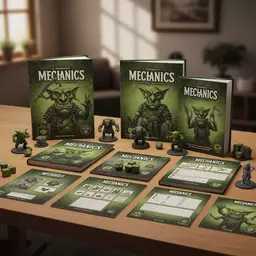 Curious about how the quirky mechanics of goblins can elevate your gaming experience? Unleash the fu
Curious about how the quirky mechanics of goblins can elevate your gaming experience? Unleash the fu
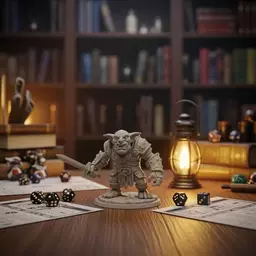 As you embark on your homebrew journey, the balance of goblin stats can make or break your gaming ex
As you embark on your homebrew journey, the balance of goblin stats can make or break your gaming ex
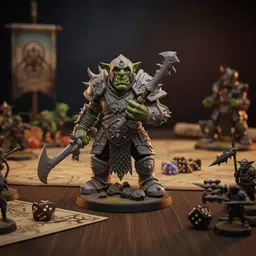 Have you ever considered how the smallest creatures can wield the greatest potential? When it comes
Have you ever considered how the smallest creatures can wield the greatest potential? When it comes
